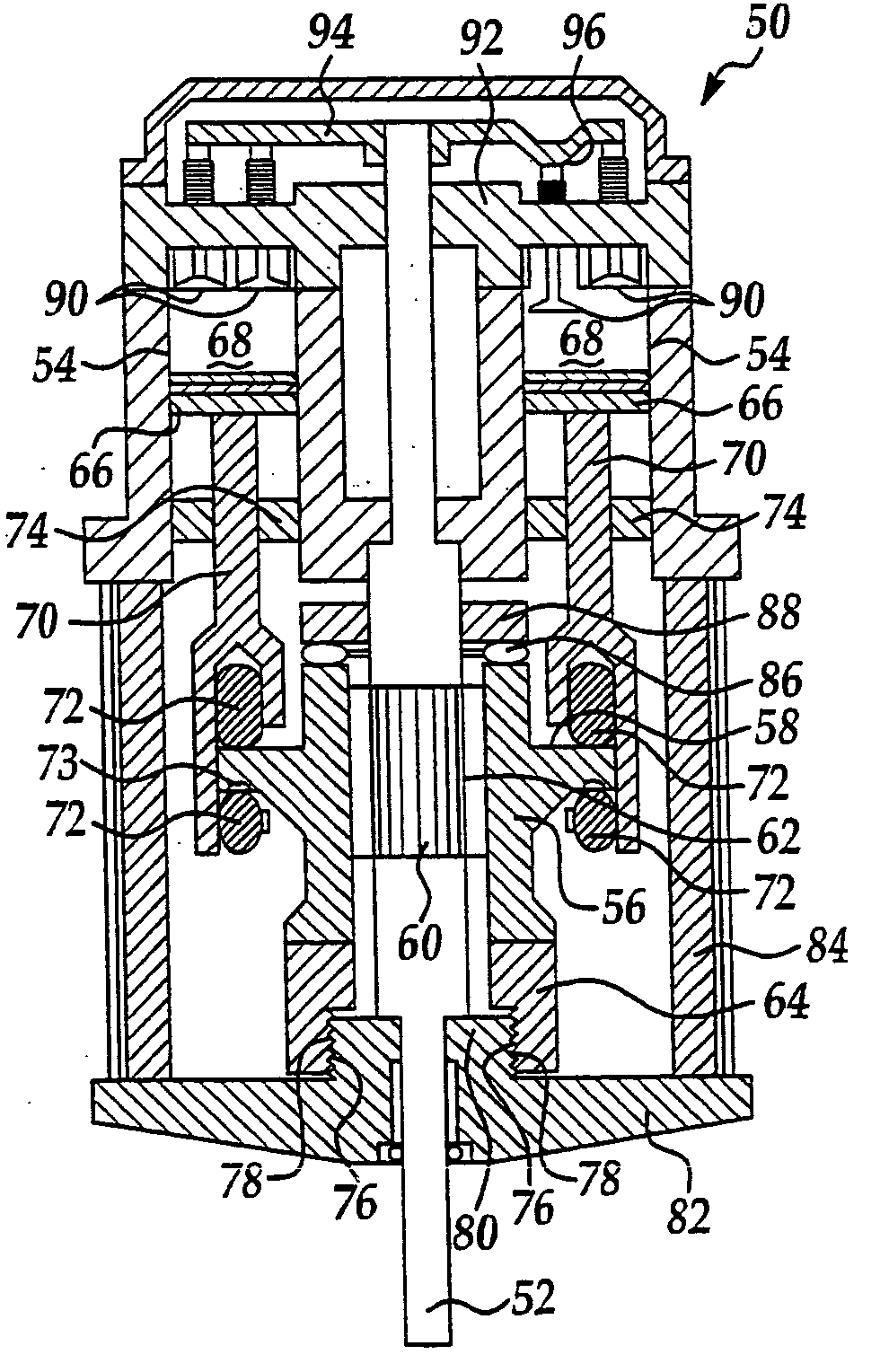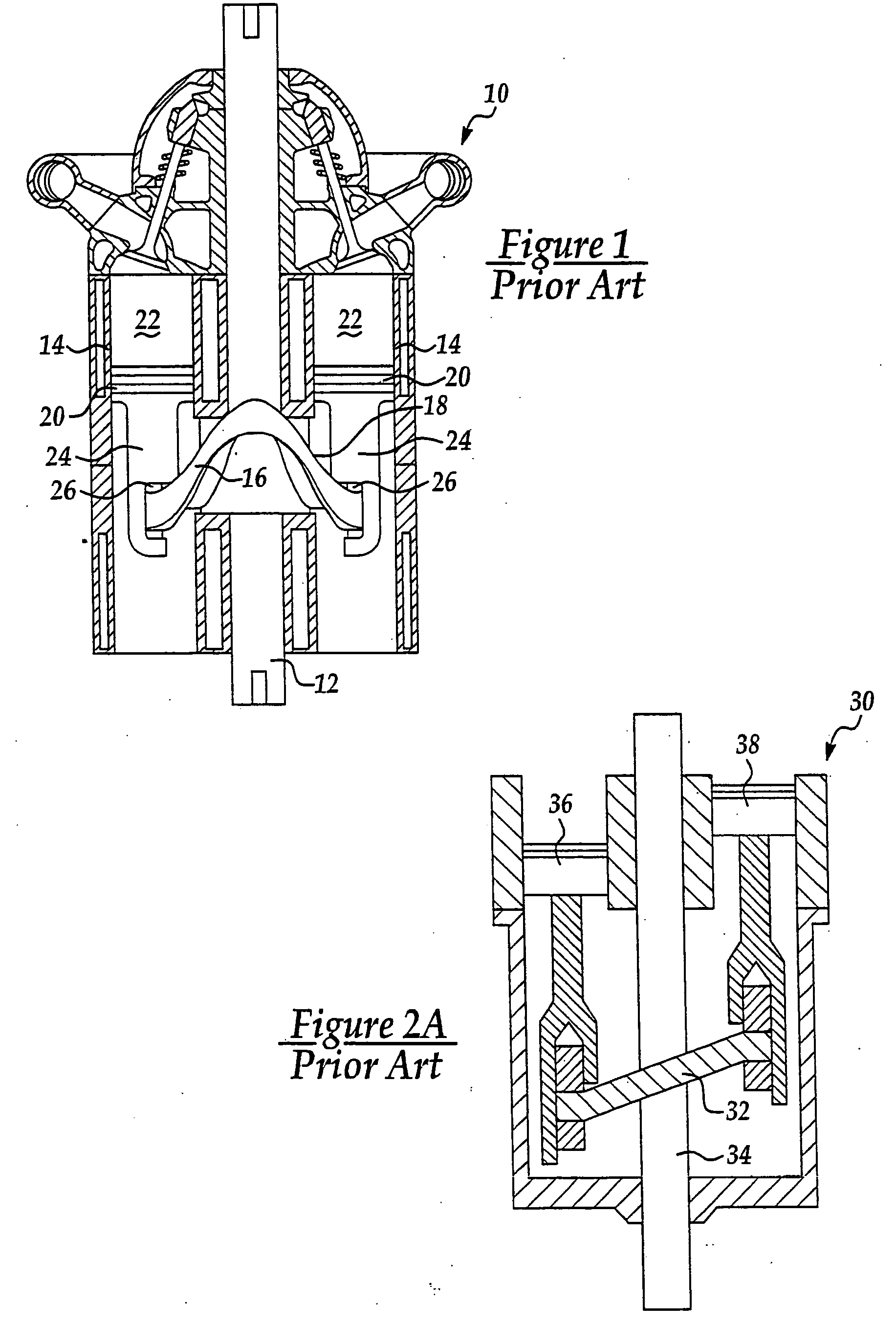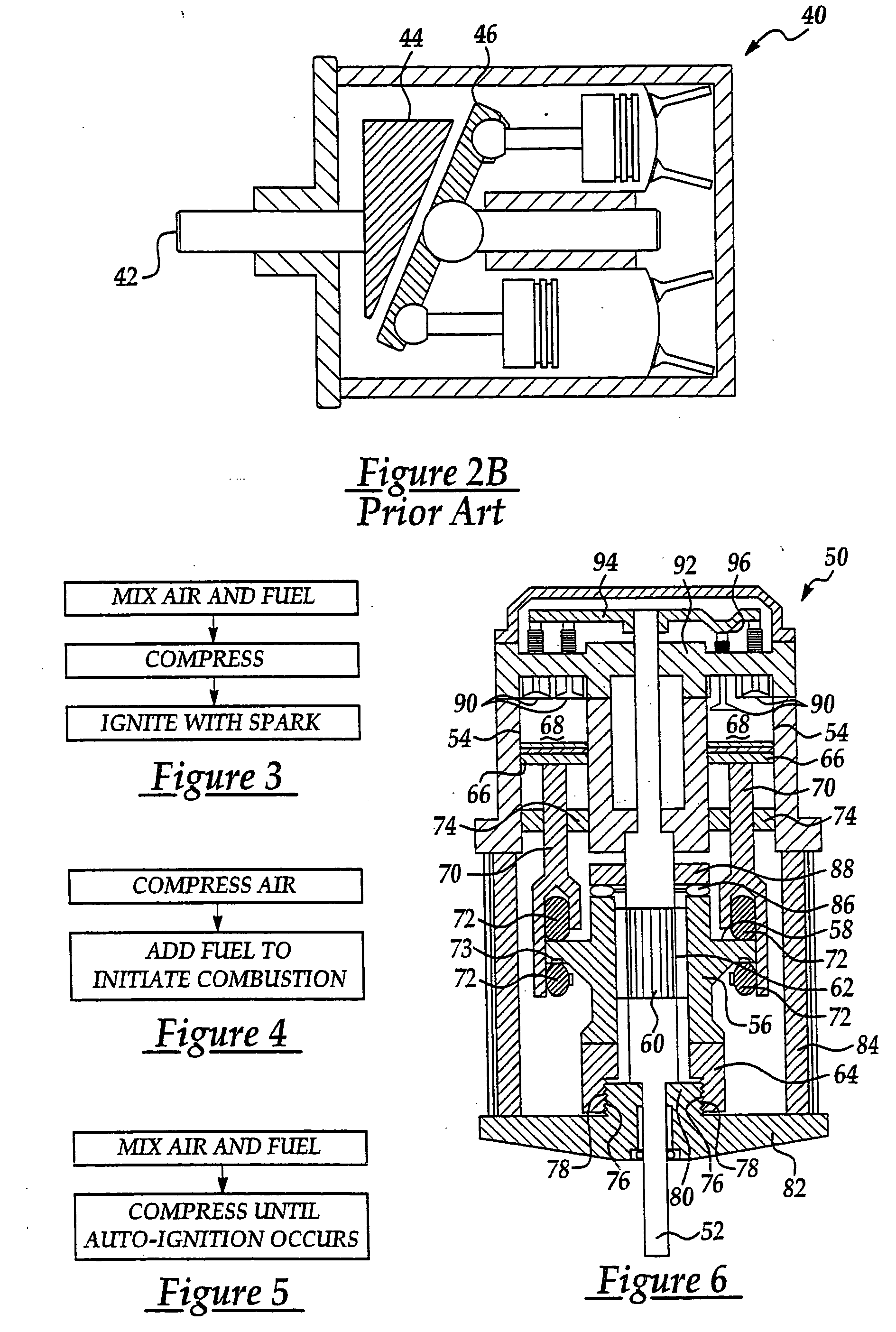Homogeneous charge compression ignition and barrel engines
a technology of compression ignition and charge, which is applied in the direction of combustion engines, internal combustion piston engines, machines/engines, etc., can solve the problems of slow response to changes in running conditions, significant variations in power output of different cylinders, and non-optimal approaches, and achieve the effect of rapid raising the compression level
- Summary
- Abstract
- Description
- Claims
- Application Information
AI Technical Summary
Benefits of technology
Problems solved by technology
Method used
Image
Examples
Embodiment Construction
HCCI Barrel Engine
[0079] The present invention is directed to improvements in the class of internal combustion engines referred to herein as barrel engines and to improvements in homogenous charge compression ignition (HCCI) engines, either in combination or separately. In addition, various aspects of the present invention are applicable to engine configurations other than barrel engines and to compression strategies other than HCCI. As discussed in the Background of the Invention, a barrel engine is a type of internal combustion engine that does not include a traditional crankshaft to reciprocate pistons in cylinders. Instead, in a barrel engine, one or more pistons usually mechanically communicate with a track or plate that has a cam surface that undulates towards and away from the cylinders as the engine turns. The mechanical communication between the pistons and the cam surface causes the pistons to reciprocate in their cylinders as the track or plate rotates with respect to the...
PUM
 Login to View More
Login to View More Abstract
Description
Claims
Application Information
 Login to View More
Login to View More - R&D
- Intellectual Property
- Life Sciences
- Materials
- Tech Scout
- Unparalleled Data Quality
- Higher Quality Content
- 60% Fewer Hallucinations
Browse by: Latest US Patents, China's latest patents, Technical Efficacy Thesaurus, Application Domain, Technology Topic, Popular Technical Reports.
© 2025 PatSnap. All rights reserved.Legal|Privacy policy|Modern Slavery Act Transparency Statement|Sitemap|About US| Contact US: help@patsnap.com



